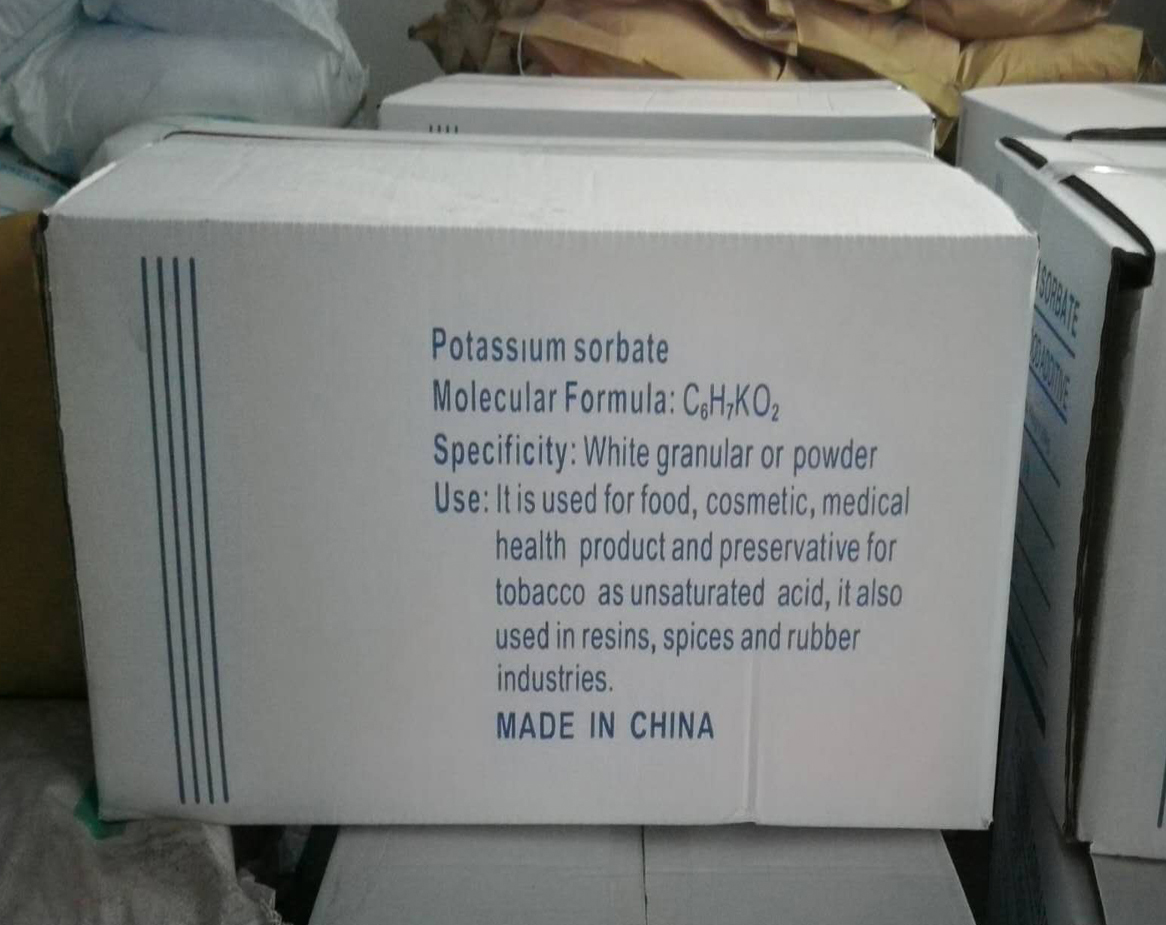Potassium Sorbate – High-Quality Food Preservative & Mold Inhibitor
Potassium Sorbate (E202) is a highly effective food preservative and antimicrobial agent, widely used in the food, beverage, cosmetic, and pharmaceutical industries. It prevents the growth of mold, yeast, and bacteria, ensuring extended shelf life and food safety. Jiangsu Khonor Chemicals Co., Limited provides high-purity potassium sorbate in granular and powder forms, complying with international food safety standards.
As a widely accepted FDA, EU, and FCC-approved preservative, potassium sorbate is a preferred choice for food manufacturers looking for safe, odorless, and non-toxic preservation solutions.
Key Features & Benefits:
Highly Effective Preservation – Inhibits mold, yeast, and bacterial growth, extending product shelf life.
Food & Beverage Approved – Recognized as a safe preservative by FDA, EU, and FCC.
Odorless & Tasteless – Does not alter the flavor, color, or texture of food products.
Water-Soluble & Easy to Use – Readily dissolves for seamless integration in formulations.
Versatile Applications – Suitable for food, beverages, cosmetics, and pharmaceuticals.
Meets Global Quality Standards – Compliant with FCC, USP, BP, and food safety regulations.
Applications of Potassium Sorbate:
Food Industry (E202): Used in dairy products, baked goods, dried fruits, sauces, and processed meats to prevent spoilage.
Beverages: Essential in fruit juices, carbonated drinks, and wine to maintain freshness.
Cosmetics & Personal Care: Found in lotions, shampoos, and skincare products as a safe preservative.
Pharmaceutical Industry: Used in syrups, oral solutions, and medications to ensure product stability.
Animal Feed: Helps maintain feed quality by preventing microbial contamination.
Industrial Use: Applied in coatings, adhesives, and plastics to inhibit microbial growth.
Product Specifications:
| Chemical Name | Potassium Sorbate |
|---|---|
| Chemical Formula | C₆H₇KO₂ |
| Molecular Weight | 150.22 g/mol |
| CAS Number | 24634-61-5 |
| Appearance | White granular or powder |
| Solubility | Highly soluble in water |
| Grade | Food grade, pharmaceutical grade, industrial grade |
| Packaging | 25kg bags, 50kg drums, or bulk packaging |
| Shelf Life | 2 years under proper storage conditions |
Why Choose Jiangsu Khonor Chemicals Co., Limited?
High-Quality Standards: We ensure our potassium sorbate meets international safety and purity requirements.
Competitive Pricing & Bulk Supply: Directly sourced from top manufacturers to provide the best pricing.
Fast Shipping & Custom Packaging: Flexible packaging options available for worldwide distribution.
Reliable Customer Support: Dedicated service to ensure seamless transactions and product satisfaction.
Order Potassium Sorbate Today!
Looking for a trusted potassium sorbate supplier? Contact Jiangsu Khonor Chemicals Co., Limited today for bulk orders, competitive pricing, and sample requests. We guarantee high-quality products, fast delivery, and excellent customer service.
</body> </html>




